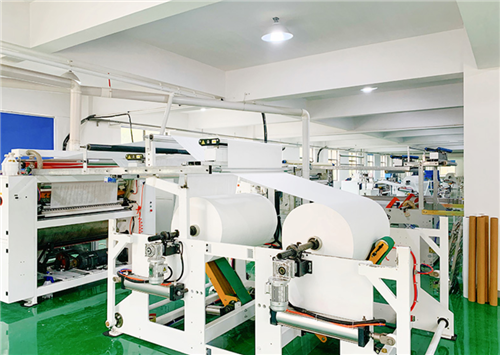Nonwovens have become an essential component of various industries due to their unique properties and versatility. Looking ahead to the next five years, the industrial nonwovens industry will see significant growth driven by technological advancements, growing demand in multiple application areas and an increasing focus on sustainability.
Nonwoven fabrics are engineered materials made of fibers bonded together by mechanical, thermal or chemical processes. Unlike traditional woven fabrics, nonwoven fabrics do not require weaving or knitting, which allows for faster production and greater design flexibility. This feature makes it particularly attractive in industrial applications where efficiency and performance are critical.

One of the main drivers of the growth of the industrial nonwovens market is the growing demand from the automotive industry. Nonwovens are used in a wide range of automotive applications, including thermal insulation, sound insulation, and filtration. As the automotive industry continues to grow, especially with the rise of electric vehicles, the demand for lightweight, durable, and efficient materials will continue to grow. Nonwovens offer an excellent solution, with the properties needed to improve vehicle performance while reducing the overall weight of the vehicle.
In addition to the automotive industry, the healthcare industry is another important contributor to the growth of industrial nonwovens. The COVID-19 pandemic has highlighted the importance of hygiene and safety, leading to a surge in demand for medical nonwoven products such as masks, protective clothing, and surgical drapes. As global healthcare systems continue to prioritize infection control and patient safety, reliance on nonwovens is expected to remain strong. In addition, innovations in antimicrobial treatments and biodegradable materials are likely to enhance the appeal of nonwovens in this sector.
The construction industry is also gradually recognizing the advantages of nonwovens. Due to their durability and resistance to environmental impacts, these materials are increasingly used in geotextiles, insulation materials and roofing materials. With the acceleration of urbanization and the expansion of infrastructure projects, the demand for high-performance nonwovens in the construction industry is expected to grow significantly in the next five years.
Sustainability is another key factor that will impact the future of industrial nonwovens. As environmental awareness continues to grow, manufacturers are increasingly focusing on producing environmentally friendly nonwoven materials. This includes using recycled fibers, biodegradable polymers, and adopting sustainable production processes. As consumers and businesses alike place an emphasis on sustainability, demand for nonwovens that align with these values is expected to increase.
Technological advances are also playing a vital role in shaping the future of industrial nonwovens. Innovations in fiber technology, bonding methods, and finishing processes are enabling manufacturers to produce nonwovens with improved properties, such as increased strength, softness, and moisture management. These advances will not only expand the range of applications for nonwovens, but will also improve their performance in existing uses.
All in all, the outlook for the industrial nonwovens market is bright over the next five years. With growing demand from the automotive, healthcare and construction industries, as well as a strong focus on sustainability and technological innovation, nonwovens are well positioned to meet the changing needs of a wide range of industries. As manufacturers continue to explore new applications and improve production methods, the growth potential in this area is huge, making it an area worth watching in the coming years.
Post time: Jul-14-2025
